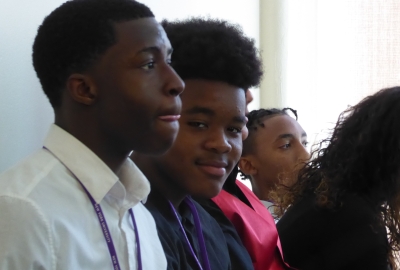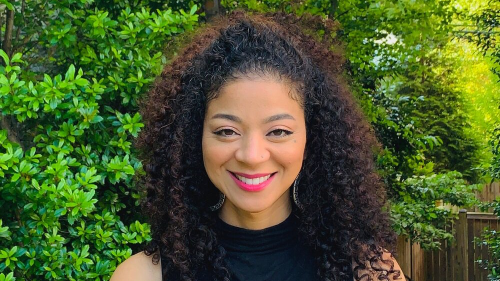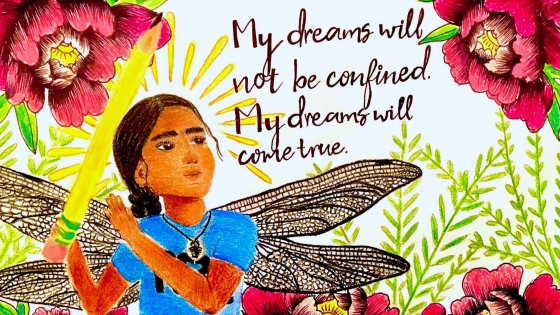
This article reimagines the place of integration in the struggle to advance equity in education. Dr. Sonya Douglass Horsford provides a passionate counter-commentary, inviting readers to rethink integration as both a paradigm and strategy useful for representing the needs and interests of students of color, whom she argues should experience schooling with dignity in environments that value and want them.

I often get the sense that my critique of school integration is interpreted as a lack of support for the cause of racial diversity and unity. When I first began delivering talks to discuss my book, Learning in a Burning House: Educational Inequality, Ideology, and (Dis)Integration (2011), there was usually someone in the audience who asked (and others who silently wondered), if I thought that the all-Black segregated schools described in the book were better for Black children than the ones we have today. I never quite knew how to answer the question, and I suppose it is because it was never mine to answer.
I didn’t live through Jim Crow or attend an all-Black segregated school. I went to public schools in Las Vegas, Nevada, in the mid-1980s and early 1990s. My classmates represented a wide range of racial, cultural, and religious backgrounds. My close friends were African American, white, Mexican, Filipina, Cuban, and Vietnamese—some of whom, like me, represented mixed ethnic ancestry, were children of immigrants, and whose parents worked in the gaming or hospitality industry, served in the military, or were able to land a government job with good benefits. Many of us served as cultural brokers between our homes, schools, and the broader institutions that we navigated alongside or on behalf of a parent who spoke Spanish or Korean or Tagalog at home. We may have looked different from one another but had so much more in common—the pressures of growing up, trying to fit in, and hoping to make our parents proud by doing well in school. We were their American Dream.
And many years later, as a Black mother of three children (middle school, high school, and college) who wants what is best for her children, I continue to wrestle with what constitutes the best type of learning environment for young people in a society that does not value their intellect, culture, or humanity. I also question how we as a nation make assumptions about the racial composition of our schools, which have implications for how integration is defined and what problem it aims to solve. What do we mean by school integration when, for the first time in the nation’s history, the majority of school-aged children are students of color? What does an integrated school look in the current political context? And whose school integration is it?
Whose Integration Is It?
As part of a fifty-year retrospective of the Brown decisionin The Journal of American History in 2004, historian and African American studies professor Kevin Gaines explored the competing conceptions of integration that emerged in response to Brown v. Board of Education. In the opening essay titled, “Whose Integration Was It?” Gaines described the concerns expressed by African American political scientist Preston King in 1965 regarding the term integration and the misperception that had swirled around its usage by an ally of the cause, white historian August Meier. King argued that Meier had “failed to comprehend the difference between integration as the demise of separate Black institutions, and desegregation, namely, the overthrow of the regime of racial subjugation defined by the exclusion of Black people “from access to power, wealth, education, status, and dignity” (pp. 19-20). According to Gaines (2004), by 1965,
…integration had generally described a top-down vision of racial change endorsed by U.S. officialdom, northern liberals, and the civil rights establishment, a process orchestrated and managed primarily by policymakers. Who, except bigots and extremists, could possibly object to that exemplary vision of equality and color-blind liberalism? (p. 20)
These conflicting definitions of integration are also evident in the post-Civil Rights Era. Borrowing language from the Black freedom struggle for racial justice, a 21st century network of education reformers, policy elites, philanthropists, and social justice advocates represent a new power structure that is largely white, and yet wields disproportionate control over the education of children of color and the options made available to their parents and in their communities. These modern-day “white architects” (Watkins, 2001) of urban education, like their predecessors, continue to advance a vision of equity and diversity grounded in the belief that if the Brown decision declared separate schools inherently unequal, the way to address the problem of educational inequality is through racial integration.
This conception of integration, however, remains a dilemma for the cause of racial justice because it fails to acknowledge that Brown “fell considerably short of the structural vision of equality and redistributive justice sought by African American litigants and many black parents” (Watkins, 2001, p. 21). It also overlooks the Black experience and perspective on the question of desegregation, which has in many cases, as explained by Preston King, misses the original goal of Black parents and plaintiffs—equality and freedom. Freedom from racial violence, subjugation, and discrimination and equal rights and protections of citizenship granted under the law. Yet, any critique of integration can easily become interpreted as either support for voluntary separatism, an unhelpful embrace of pessimism, or a misguided nostalgia for community control that fails to find hope in the possibilities of a diverse, inclusive, and just society.
Perhaps this is why Zora Neale Hurston waited one year after Brown I (1954) to “break her silence” on the court’s decision in a letter to the editor of the Orlando Sentinel titled, “Court Order Can’t Mix the Races Mix.” She wrote, “The whole matter revolves around the self-respect of my people. How much satisfaction can I get from a court order for somebody to associate with me who does not wish me near them?”
Herein lies the heart of the issue—the self-respect of Black people in a society where Black lives remain devalued and unprotected. Some research studies suggest racially diverse schools benefit all students, but how do we account for the price that is paid by Black children who exist in schools and classrooms where they are not wanted? Where members of the school community believe the increased presence or participation of Black families diminishes the overall quality of the school? Or where the gifts, talents, and achievement of Black children go unrecognized or unrewarded?
It reminds me of James Baldwin’s 1963 novel, The Fire Next Time, where Baldwin asked, “Do I really want to be integrated into a burning house?” His question emphasizing the point that the concept of integration being advanced was neither his idea, at his request, or worth the cost.
A Vision Problem
One source of confusion around what school integration is stems from differing visions of educational equality and opportunity that come from competing definitions of segregation. As legal scholar and critical race theorist Lani Guinier explained, Brown’s declaration that “separate schools are inherently unequal” became the gold standard for formal equality leading colorblind integration advocates “to equate race-conscious government decisions that seek to develop an integrated society with the evils of de jure segregation.” This certainly coincided with my formative views on racial segregation, where I had concluded that since the forced separation of people by race was wrong, integration must be right.
My thinking would shift in the midst of my doctoral studies in 2006 after meeting Professor Asa Hilliard at the Annual Meeting of the American Educational Research Association in San Francisco. After sharing the purpose and rationale of my proposed study and plans to interview retired African American school superintendents who attended all-Black segregated schools about their views on integration, he gently broke the news to me that “integration never happened.” He then asked me about the research that had formed my conception of integration, which was of course, as he anticipated, the widely-cited books and articles by white scholars who amplified the benefits of school integration and warned of the dangerous reversal of Brown and looming trend toward resegregation. It was hard news to take in the moment, but necessarily paradigm-shifting in forcing me to engage critically with the research literature and taken-for-granted assumptions about school integration and the education of Black children through the white gaze. Who were the researchers conducting these studies? How were they framing the problem of school segregation? What perspectives and experiences did they bring to their work? In what ways, if any, did their work produce meaningful change in the area of school integration? How had it helped to achieve educational equality for Black children?
It also prepared me for what my study participants would eventually share and become a critical counternarrative pushing back on much of what I had read in the school desegregation literature. What I learned from these eight Black educational leaders, men and women, who had actually attended all-Black segregated schools and ascended to the superintendency in desegregated school systems was: (1) “There is nothing wrong with something being all Black,” (2) Sometimes I feel like the problems started with desegregation,” and (3) “We’ve never truly integrated.” They emphasized the value and significance of Black organizations and institutions in supporting their own educational development (all but one graduated from Historically Black Colleges and Universities (HBCUs)) felt strongly that their all-Black schools and institutions prepared them well and gave them the confidence to compete and succeed academically and professionally in the desegregated world.
As superintendents, they would face a new set of educational injustices and inequalities with Black children in their schools and systems being identified disproportionately as low-achieving, having special needs, discipline problems, or less capable than their peers. Sadly, these trends persist sixty-five years since Brown dismantled the century-long doctrine of separate-but-equal. In The Strange Career of Jim Crow (1955), C. Vann Woodward explains why:
Segregation, as the word is used here, means physical distance, not social distance – physical separation of people for reasons of race. Its opposite is not necessarily ‘integration’ as the word is currently used, or ‘equality.’ Nor does the absence of segregation necessarily imply the absence of other types of injustice or the lack of a caste structure of society … Since segregation is subject to the whim of individuals and the custom of localities it could and did crop up in all periods and in numerous manifestations. (pp. xi-xii)
How might equality and justice for Black people ever be achieved if segregation is in fact “subject to the whims” of the members of society? What have we learned from our complicated history of racial segregation in schools? What is the state of Black education in the post-Civil Rights Era, and how will today’s integration efforts impact the social, emotional, academic, cultural, and intellectual lives of Black children for the better? Put differently, does the Black child need integrated schools?
Before and Beyond Integration
In reflecting on my own schooling experiences in Las Vegas, it is hard to say whether or not my schools were integrated based on today’s standards. I also wonder if the schools my children have attended over the years would be considered integrated and how that conception might look different in Salt Lake City, Utah; Atlanta, Georgia; El Paso, Texas, or New York City. Are traditional public or charter schools designed for boys of color inherently unequal? Historically Black Colleges and Universities? What about private independent schools with nearly all white enrollment, faculty, and administration? If research shows that Black students with Black elementary school teachers graduate from high school at greater rates, how does one leverage these benefits while supporting diversity and integration?
In his 1935 essay, “Does the Negro Need Separate Schools,” W.E.B. Du Bois takes on the question of whether separate schools and institutions are needed for “the proper education of Negro race.” He reported that of the four million Black children of school age, two million were in school and that 4 out of 5 of those children were being taught by Black teachers in separate schools. Less than 500,000 were being taught by white teachers in the North. His answer to the question was yes; for as he explained:
We shall get a finer, better balance of spirit; an infinitely more capable and rounded personality by putting children in schools where they are wanted, and where they are happy and inspired, than in thrusting them into hells where they are ridiculed and hated. (p. 330)
He also delineated the requirements for the “proper education of any people” that, nearly eighty years later, reflects what advocates for culturally relevant and responsive education have been working to reclaim and restore:
- sympathetic touch between teacher and pupil;
- knowledge on the part of the teacher, not simply of the individual taught, but of his surroundings and background, and the history of his class and group;
- such contact between pupils, and between teacher and pupil, on the basis of perfect social equality, as will increase this sympathy and knowledge; and
- facilities for education in equipment and housing, and the promotion of such extra-curricular activities as will tend to induct the child into life.
Rather than continue to debate the contested claim that integrated schools benefit all students, which remains contested along the color line, we must shift our focus and energy toward a vision that moves beyond a conception of school integration that has been decontextualized from its Jim Crow past. As a nation, we have been given the gift of current and future generations representing a rich tapestry of ethnic, cultural, linguistic, religious, and intellectual diversity—for whom top-down visions of integration based largely on racial classifications—byproducts of white supremacy and racism, will always fall short. We are a long overdue for a more radical imagination of what education can and must be for America’s new majority.
It is invigorating to see students, parents, educators, community members and activists representing historically disenfranchised and unprotected communities rightly demanding the resources necessary to achieve a proper education. Instead of trying to convince, through policy, “somebody to associate with me who does not wish me near them,” adequate and equitable resources must be granted before trueintegration can be realized and sustained. This redistribution of resources, with less concern on the “separate” and a greater focus on the “equal” must be used to provide children with access to caring, demanding, and well-prepared teachers with high expectations, a curriculum that teaches the history of their group, and a supportive and affirming environment that fosters self-knowledge, self-confidence, and self-respect. In the words of Zora Neale Hurston, “Thems my sentiments and I am sticking by them.”
References
Chapman, T. K. (2014). Is integration a dream deferred? Students of color in majority white suburban schools. The Journal of Negro Education, 83(3), 311-326.
Du Bois, W. E. B. (1935). Does the Negro need separate schools? The Journal of Negro Education, 4(3), 328-335.
Gaines, K. (2004). Whose integration was it? An introduction. Roundtable: Brown v. Board of Education, fifty years after. The Journal of American History, 19-25.
Horsford, S. D. (2011a). Learning in a burning house: Educational inequality, ideology, and (dis)integration. New York: Teachers College Press.
Horsford, S. D. (2011b). Vestiges of desegregation: Superintendent perspectives on inequality and (dis)integration in the post-Civil Rights Era. Urban Education, 46(1), 34-54.
Horsford, S. D. (2019). School integration in the New Jim Crow: Opportunity or oxymoron? Educational Policy.
Horsford, S., Scott, J., & Anderson, G. (2019). The politics of education policy in an era of inequality: Possibilities for democratic schooling. New York: Routledge.
Hurston, Z. N. (1955, August). Letter to the editor: Court order can’t make the races mix. Orlando Sentinel.
Watkins, W. H. (2001). The White architects of Black education: Ideology and power in America, 1865-1954. Teachers College Press.
___
Dr. Sonya Horsford is Associate Professor of Education Leadership at Teachers College, Columbia University. She can be reached by email at: horsford@tc.columbia.edu

